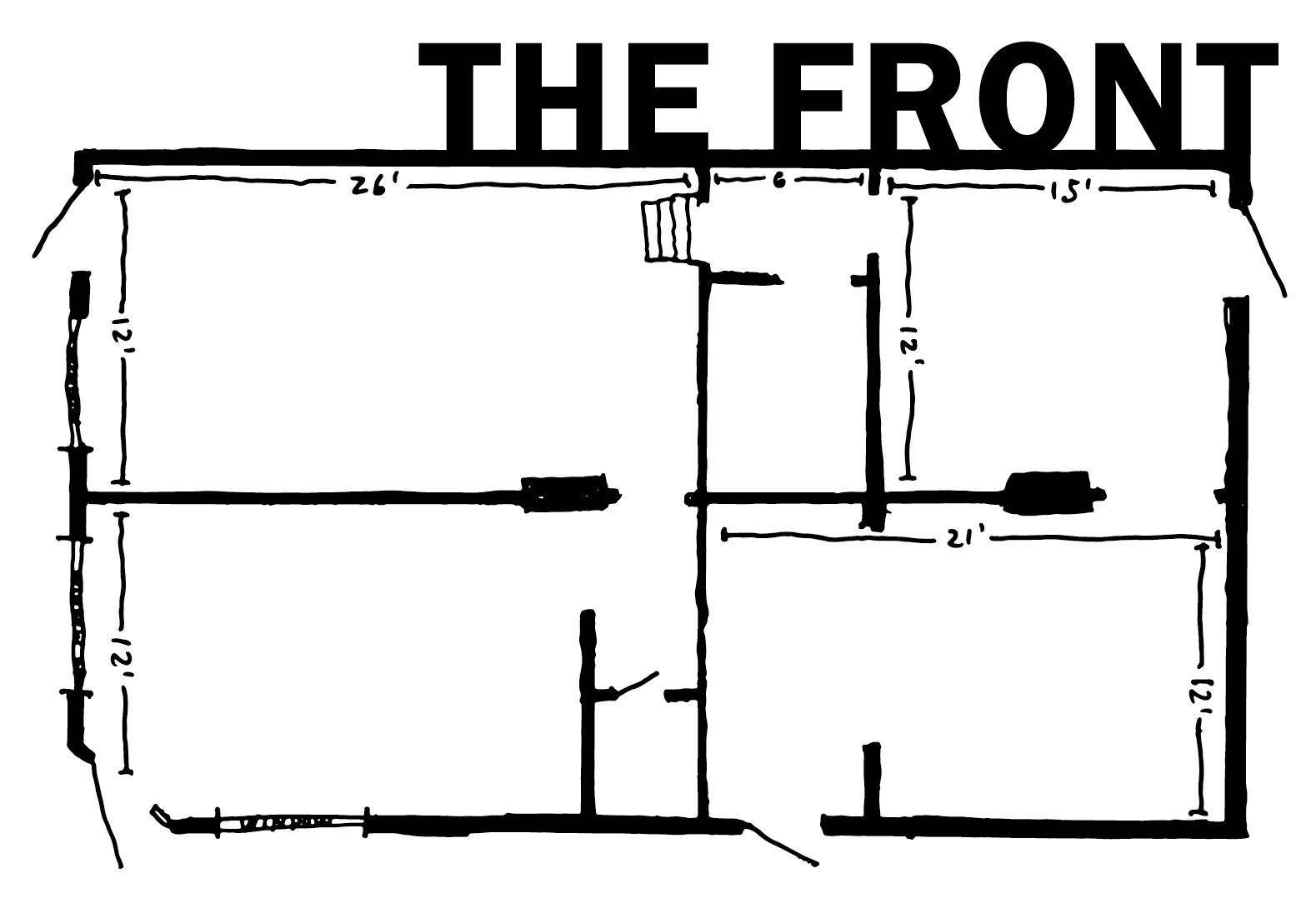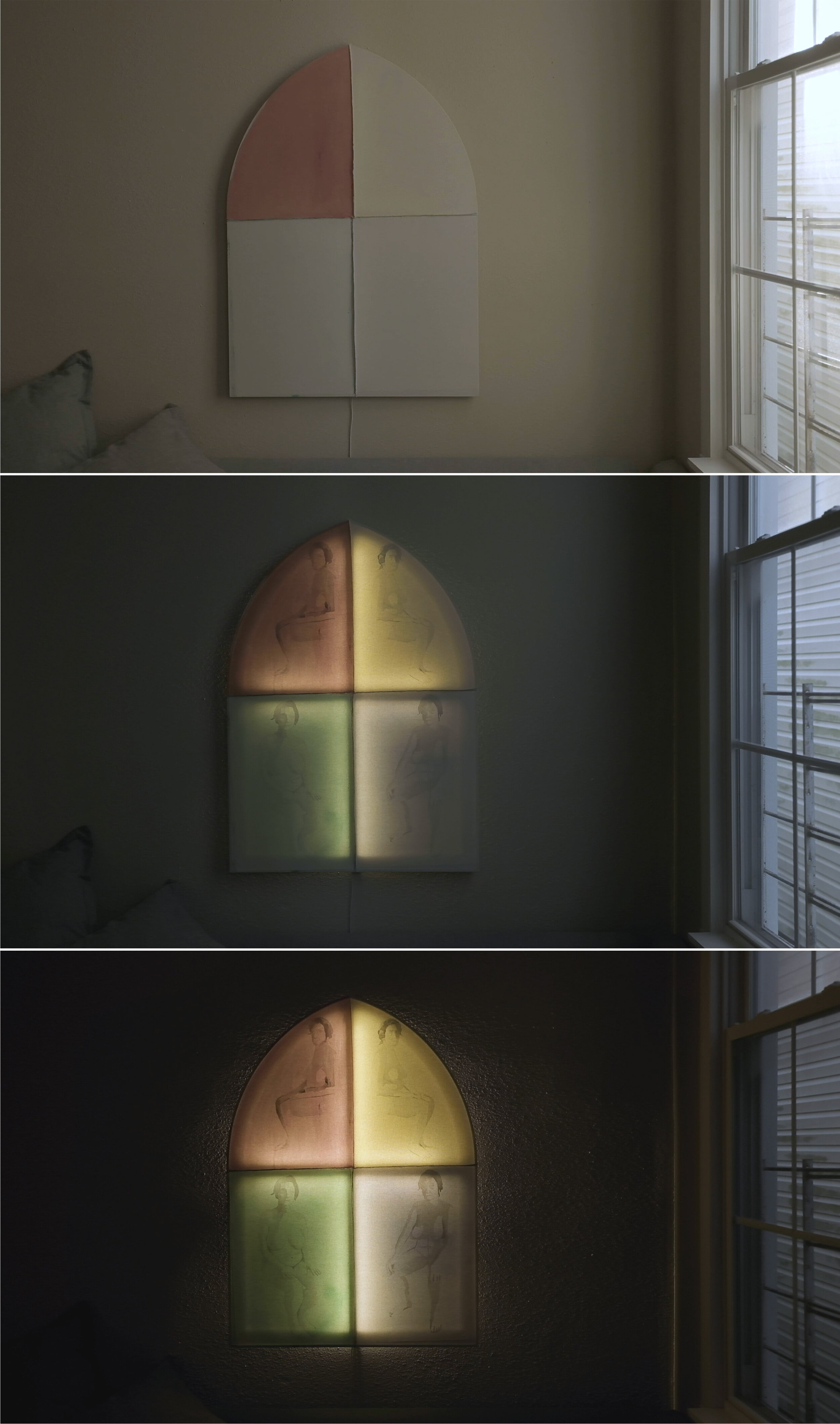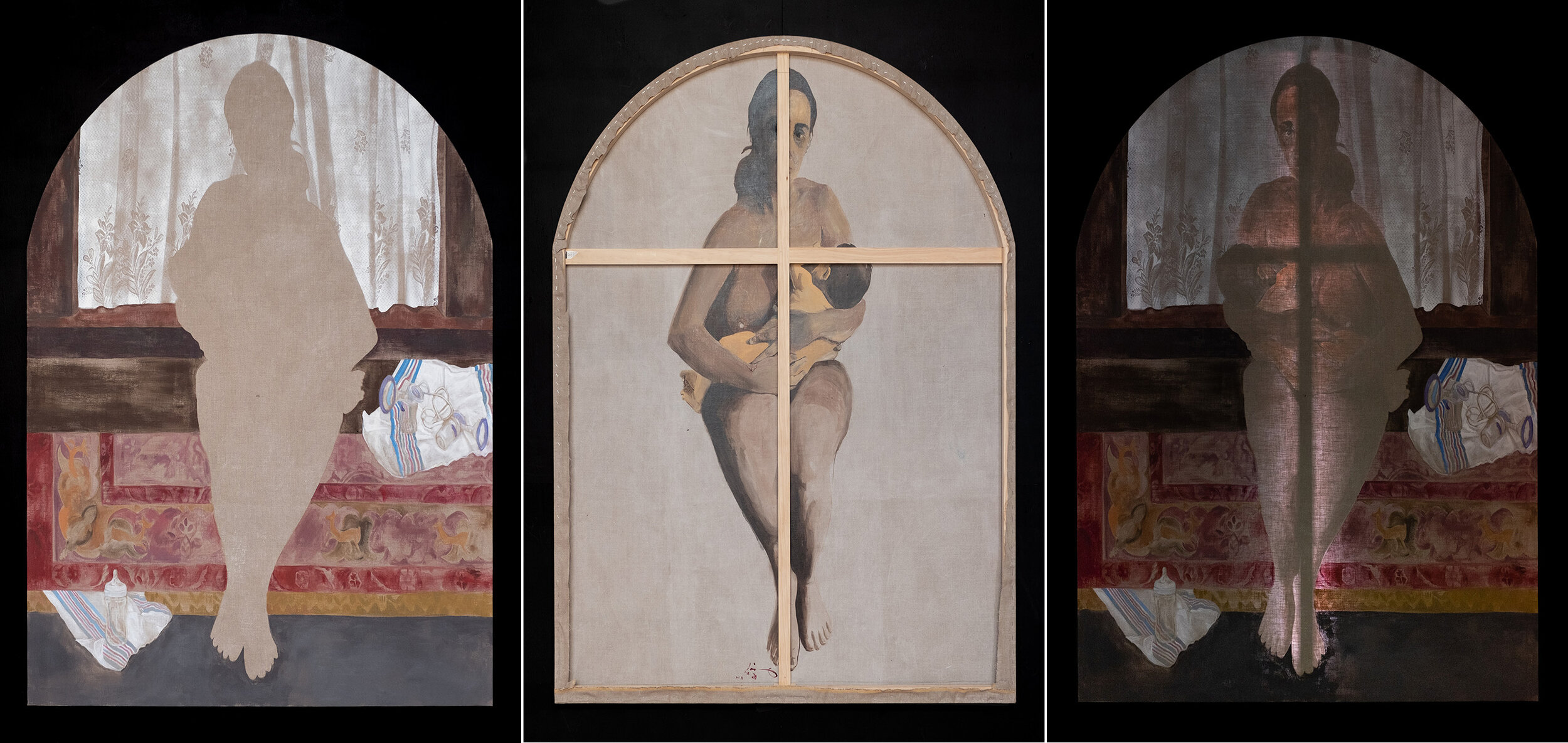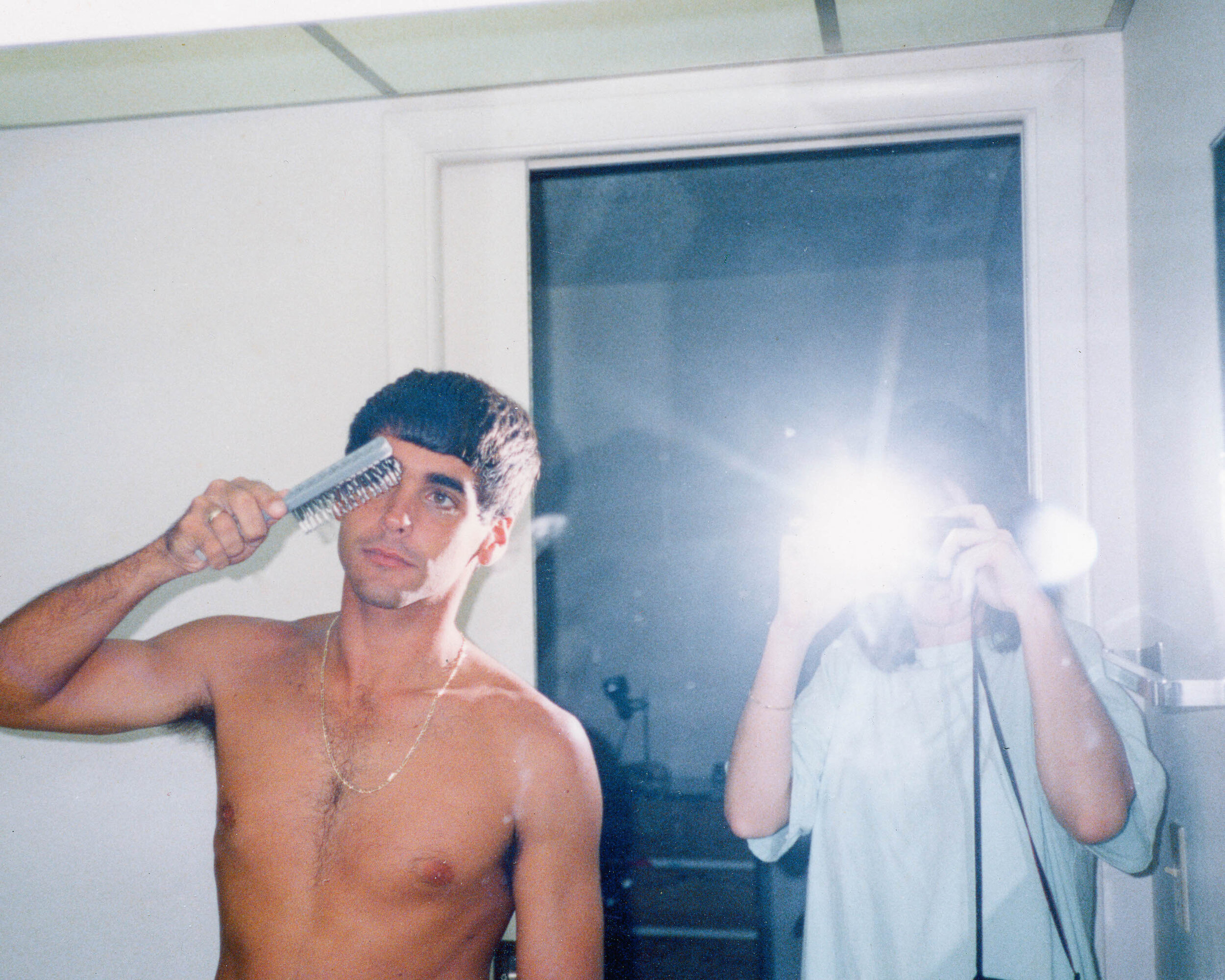February 13 - March 7, 2021
Open February 13, 12-9pm, regular hours there-on Saturdays and Sundays 12-5pm.
Imbolc
Imbolc is a group exhibition featuring six artists who recently joined collectively-run gallery The Front and curated by fellow new member Samantha Best. Marking the close of one chapter and the beginning of another, the title Imbolc references the Gaelic festival held annually on February 1st to celebrate the start of Spring. The show includes a range of mediums: figurative paintings by Tom Walton and Sara Madandar, photography by Daniela Leal, installations by Elliott Stokes and Rooms by DLUX and performance by Rodney A. Brown.
Tom Walton
Reading the Water Marks, Tom walton, 31”x42”, Oil on Linen, 2020
Remembrance Parade, Tom Walton, 31"x42", Oil on Linen, 2020
Tom Walton, 41, was born in Oxford, United Kingdom. As an infant he relocated to Washington, DC. Beginning at age 16, he studied with the artist Carlo Pittore. Walton received his BFA from the Rhode Island School of Design in 2004 and his MFA from the Pennsylvania Academy of Art in 2007. In 2020 Walton had solo show of his paintings at Gross McCleaf Gallery in Philadelphia PA. He is a recent recipient of an Elizabeth Greenshields grant. He has a painting in the permanent collection of the Woodmere Museum located in Philadelphia PA. In 2018 he curated a National show of paintings titled “Real to not Real” at Southeastern Louisiana University where he is an Assistant Professor of Painting. Walton is married to the artist Laura Velez and lives in New Orleans.
My artistic philosophy is one of slowing down, listening, and letting the moment guide the painting. The psychology of perception is at the forefront of my interests. I am deeply engaged in how the act of painting can reveal my own feelings about a subject. Ultimately this process is what enables me to create paintings that transcend simple depictions of physical appearance. Much as I prepare, in the end I find in unexpected ways the power of the finished painting is that it illuminates, for me, my own unconscious or subconscious feelings. This is emphasized by how I might exaggerate the drawing of a form, place an unexpected color, or recognize a touch that fluctuates between being strident and lyrical, the speed and pressure of the paint application to the surface. A portrait can be infused with unguarded empathy, from an unexpected expression, an emotional emphasis to the mark making, or the juxtaposition of colors.
Sara Madandar
Window #1, sara madandar, acrylic and LED on canvas, 43”x 30”, 2019 | https://vimeo.com/338821361
Window #2, sara madandar, acrylic, airbrush and LED on canvas, 66 x 64”, 2020 | https://vimeo.com/440174343
Sara Madandar is an Iranian multi-disciplinary artist based in New Orleans. She received her MFA from the University of Texas at Austin and her BA in painting from the Azad University of Art and Architecture in Tehran. Through a range of media such as painting, video, installation, and performance—Madandar explores migration and the human experience of living in between cultures. Her work uses the aesthetics of language, clothing, and bodies to study the complexities of cross-cultural experiences. Madandar’s most recent accolades include an award from the Texas Visual Artists Association (TVAA) and an award from the Southeastern College Art Conference (SECAC) for an exhibition curated by Jessica Beck of the Andy Warhol museum. Sara’s work has been featured at Co-Lab Projects, Elga Wimmer PCC, New Orleans Museum of Art, Austin City Hall, New Orleans Contemporary Art Center, Elisabeth Ney Museum, Mom Gallery, Courtyard Gallery, and the Asian American Resource Center.
In the paintings comprising The Window collection, the wooden frames will be windows and the canvas will be the curtain or purdah. In Farsi, the word purdah has several meanings beyond a window curtain. As a verb, one can say "lifting the purdah'' to mean revealing the truth. As a noun, it can also mean a veil for women’s body and hair, a tableau, a tone in music, the fret of a guitar, a key in the piano, and an act in a theatrical play. The word's most embellished metaphor as a noun is its meaning of virginity or the state of being immaculate, and more literally, it also means a woman's hymen. The frames will mimic traditional Iranian windows in their arched shape, while the red, yellow, blue, and green colors will evoke their stained-glass panes. The arched shape of these frames makes reference to the painting style of the Qajar era (late 18th to early 20th century) in Iran, when artists began to embrace realism in their depiction of human subjects, often in life-size works that incorporated the arched shape typical of Iranian architecture at the time. Through this evocation of both the window and the history of the representation of human subjects in Iranian visual culture, these pieces speak to issues of visibility/invisibility and the human body in their very frames.
Hidden behind the primary colors of these works, the paintings continue on the back of the canvas, where nude figures are depicted. These nude figures do not feel shame in their exposure to the world: they will sit comfortably, unafraid of the outside gaze. They are not visible by daylight; however, as the sun sets or as lights are triggered by motion sensors, the painting will come to life. These pieces will incorporate light that emanates from within the painting, as a kind of metaphorical opening of the curtains, using LED lights built into the back of the frame that will slowly, gradually brighten. The light will reveal the figures behind the canvas much like one can peer into a home when its lights go on at night. When the sun rises in the morning, the light will slowly fade away, hiding the nude figures and returning privacy to the “residents” of the painting.
Daniela Leal
Hanging On, Detail of Installment, archival pigment print of found family image, taken by artist’s mother, Andrea Leal, 24x30 unframed, 26x32 framed, 2020
Daniela Leal (b. 1995) is a photographer living and working in New Orleans, Louisiana and on occasion Miami, Florida where she was born and raised. She has exhibited work at the Contemporary Art Center of New Orleans and the Ogden Museum of Southern Art. Her work explores intergenerational narratives and Love as a notion and an act.
www.danilealphotography.com
@danileal__
Elliott Stokes
Louisiana Biofilm Matrix, ELLIOTT STOKES, (Site-specific installation) Collected oil shale remnants, dried algae, grass, various organic matter, 2020-21.
Elliott Stokes (B. 1990, New Orleans, LA.) Stokes recently received his Studio MFA from the University of Illinois in Urbana-Champaign with a concentration in painting, sculpture and new media. His artwork exists within the gray area of necessity and critique of industrial and agricultural processes and how they reflect past histories and infer future trajectories. Positioning his artwork between reverence and contempt of industry, specifically petrochemicals, Stokes uses this tension as a launching point for cultural examination and introspection. He has exhibited nationally, including Wet Paint MFA Biennial and Visions of Venus with Zhou B. Arts Center in Chicago and Constructing the Break at New Orleans Contemporary Arts Center. He is currently a member of The Front gallery in New Orleans.
I am interested in the relationship one has with landscape, in which unity between body and place exists through one’s labor, and what we are asking of the landscape, a negotiation and a system of transaction. This relationship is found throughout the landscape of southeast Louisiana, where a person can feel the weight of history through the relics of former industries. We believe the places we labor are extensions of ourselves, because they remind us of the blood and toil we’ve expended. And when they’re gone, we feel left behind. I position my artwork between reverence and contempt of industry, to show action and consequence, and how the negotiation is never easy. These artworks examine memory and re-creation, specifically how past history shapes the present and future outlook.
www.elliottstokes.com
@elliott_ross_stokes
Rooms by DLUX
Garage, Rooms by DLUX, Cardboard boxes,10 x 10 ft, SUBDIVISION, 2020. Image Credit: Melisa Cardona
Rooms by DLUX was created by Jen Davis to produce immersive environments for performance and interaction. Their current project, SELFMADEMAN*, will premiere at The Front in July 2022, and, until then, will manifest in pieces as Artifacts of Transition. Jen is a trans genderqueer artist living in New Orleans.
Artifacts of Transition, receipts from pit stops on a journey. The first in this series, Say Goodbye to Hollywood, includes a definitive before and after, recorded for your listening pleasure on tape. To be trans in 2021 is, in general, to be bereft of elders. We have our friends, we have ourselves, and we have 23 year olds on the internet. We muddle through with panache. I want to share with you this feeling of living all your life in a single room only to realize, at the age of 30, that there's an entire wing, full of treasures, you never knew existed. Please have a seat and listen in.
@roomsbydlux
Rodney A. Brown
Typescenes, Rodney A. Brown, Digital Image of Color on Screen, 2021.
"By the end of reading ms. Marking underneath has become visible on the surface of Typescenes form."










